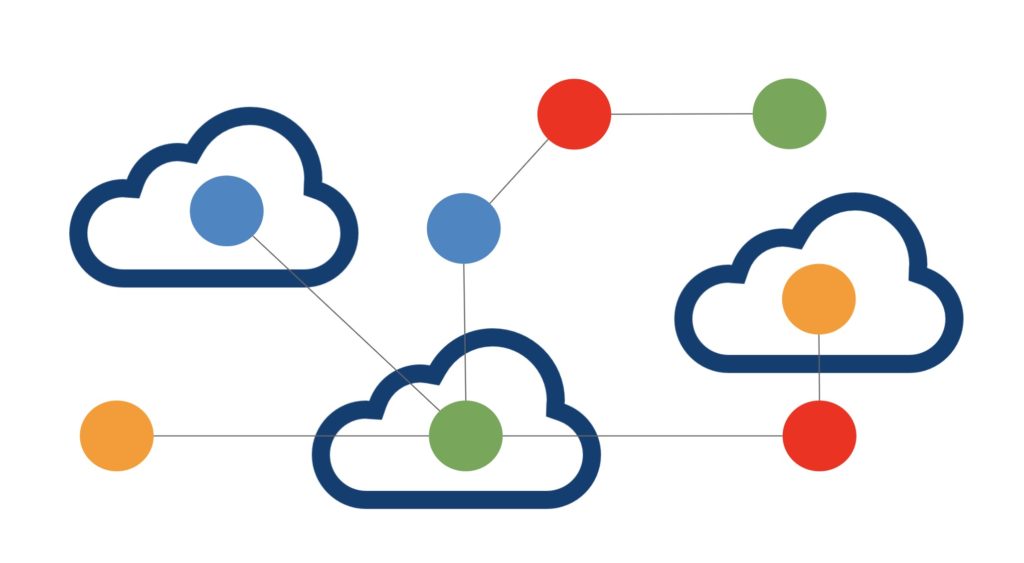
Microsoft Azure blog brings the story about how PTC and Azure partnership empowers industrial organizations. Check out the article – it gives some interesting data points. The main message is a combination of Cloud infrastructure from Azure and Industrial experience from PTC.
Combining PTC’s platform with the speed, scalability, and intelligence of Azure will enable customers to accelerate industrial innovation says Jason Zander: Corporate Vice President, Microsoft Azure
Power through partnership. Deploy production-ready, scalable, and secure industrial IoT solutions faster with PTC ThingWorx on Azure. Take advantage of integrated information systems and process management by combining the capabilities of two leading industrial IoT companies.

The article made me think about multi-cloud SaaS. But first I’d like to go back 20 years ago and talk about multiple database support.
A long time ago, PLM systems were developed on top of SQL (RDBMS) databases. The database was a system to store and manage the data and it defines a core foundation of any PDM and PLM systems. Therefore, one of the typical questions to ask about the PLM system was to ask what database it uses. It defined both many functions, but most importantly, the environment and support that was needed.
The choice of databases in the past was driven mainly by three factors – functions, cost, and IT approval. Functions and cost was a tradeoff, but IT compliance was important. Because PDM/PLM systems installation on-premise, IT usually provided their guidance and trust/veto on the usage of specific databases. The main three choices during the 2000s were Oracle, MS SQL Server, and IBM DB2. Later, we’ve seen a growth of open source SQL databases. IT became more open to accepting open-source databases and MySQL and PostgreSQL came in.
Fast forward to modern days, cloud technologies changed the way we started to think about databases. In my article PLM data management for the 21st century, I outlined the trend of diversification in database usage. A single database option is possible a thing in the past. Database and data management technology are going through a Cambrian explosion of different options and flavors. It is a result of a massive amount of development coming from open source, web, and other places. The database is moving from “solution” into “toolbox” status. A single database (mostly RDBMS) is no longer a choice for all your development tasks. SaaS developers are using multiple database strategy.- polyglot persistence to optimize data management use in cloud solutions.
At the same time, there are multiple cloud stacks (IaaS and PaaS) that can be used to develop and host SaaS solutions. AWS, GCP, Azure are one of the most popular, but there are more specific vertically oriented platforms such as Oracle, Salesforce, and others. For SaaS PLM developers, the question about what IaaS/PaaS to use is a question similar to the dilemma of supporting Oracle and MS SQL back 20 years.
Coming back to Microsoft Azure and PTC’s article, the next question will be what strategy PLM companies will use to support one or another IaaS/PaaS platforms. The decision is more complex than the decision about using Oracle DB vs IBM DB2. But there are a lot of similarities in this decision – technology, features, cost, IT approvals, etc. Some manufacturing companies might strategically look at how to focus on a specific IaaS/PaaS such as Azure or AWS. Which can create a need to support both and pay the cost of multiple platforms development? The situation will be even more interesting in regulated industries, government organizations, and the military as all these organizations will develop their cloud platform strategies.
What is my conclusion?
The adoption of SaaS is growing and PLM companies will be soon approaching a milestone to decide about supporting multiple IaaS/PaaS platforms. It is almost clear that a single platform cannot solve all problems. I found hard to believe that the manufacturing industry can be completely hosted using AWS, Azure, or even Salesforce. Similar to how it happened back in the days of multiple database support, PLM platforms will have to demonstrate their robustness to support multiple platforms and not to be dependent on a single cloud stack. Just my thoughts…
Best, Oleg
Disclaimer: I’m co-founder and CEO of OpenBOM developing cloud based bill of materials and inventory management tool for manufacturing companies, hardware startups, and supply chain. My opinion can be unintentionally biased.
The post From multiples databases to Multi-cloud SaaS PLM appeared first on Beyond PLM (Product Lifecycle Management) Blog.



Be the first to post a comment.